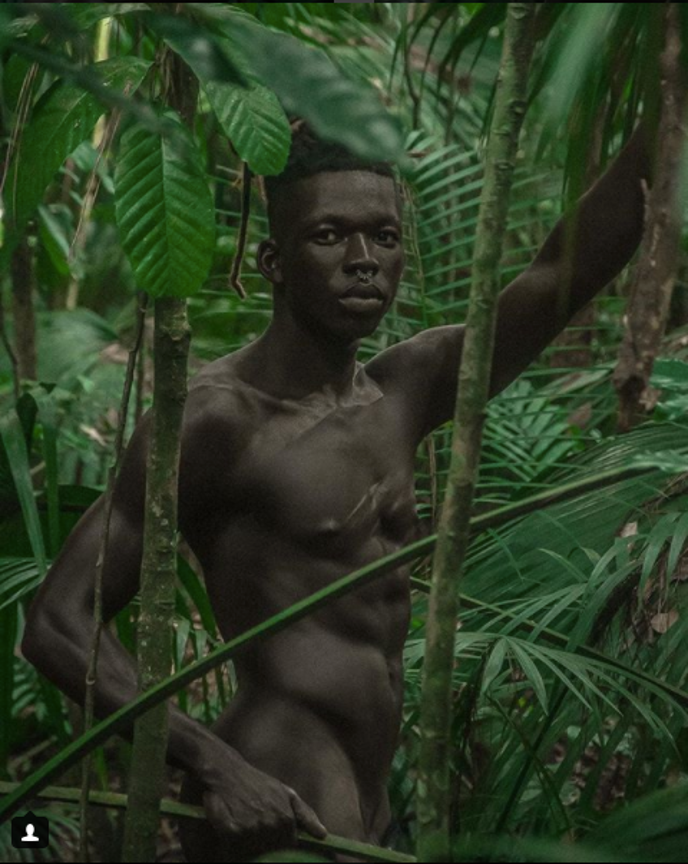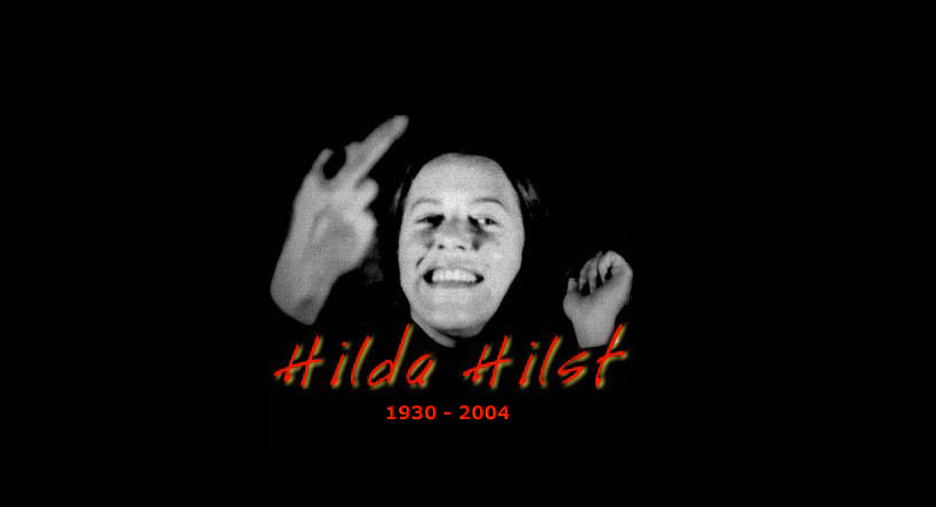John Keene
"Oh, how delicious and practical it is that people think us strange . . . "
— Hilda Hilst, Letters from a Seducer, translated by John Keene
At the outset of Hilda Hilst's notorious anti-novel Cartas de um sedutor (1991), we find the erstwhile writer Stamatius (nicknamed Tiu by his beloved Eulália) poised to embark on a series of disturbing and formally adventurous experiments that will test the limits of narrative coherence and the psychological underpinnings of focalization. He wonders, "Como pensar o gozo envolto nestas tralhas?"1 Taking up the connotations of o gozo (jouissance, joy, gibe, jism), John Keene renders the phrase as "How to think about pleasure wrapped up in this crap?" in his translation of Letters from a Seducer, published in 2014 as a collaboration between American and Brazilian independent publishers Nightboat Books and A Bolha Editora.2 In his introduction to Keene's lexically expert translation — rendered with the aural finesse of a poet's ear — Bruno Carvalho seizes on how this startling conceit exemplifies Hilst's balancing act: "Combining all these dimensions, Letters from a Seducer straddles the line between seriousness of purpose and irreverence, erudition and kitsch, grotesque and black humor, sublime and sordid."3 Such paradoxes mark the text as fundamentally queer, its internal instabilities serving to stage productive and often satirical encounters between the erotico-philosophical (a discourse historically inimical to female agency) and feminist critiques of Brazilian gender politics and literary culture. For instance, in the book's opening foray, Stamatius advances a cogito of corruption — articulating a discomfiting imperative to recognize his self as "raggedy" and covered with venereal sores — in spite of those societal forces that seek to quell such inquiry. With his mouth "toothless because of all the stress and strains and addiction," he remains defiant: "I dare think about it and they don't forgive that."4 The text seizes upon sex for its revolutionary potential, with orgasm/gozo tantamount to anti-clerical terrorism: "God? Here, oh I only know about God when I enter the hairy mouth of the wild sugar apple, and soon after we heard the bang, the church exploding like jackfruit falling from the sky."5 However, within the fructified air of Stamatius's Brazil, wherein copies of The Death of Ivan Ilich, the complete Kierkegaard,and Das Kapital molder in garbage heaps, Hilst also remains critical of how phallocentric notions of eroticism, despite their seeming radicalism, easily reinscribe patriarchal notions of state power. Hilst's rapier wit does not spare this almost-poet, "whistling the national anthem" as he fucks and oafishly boasts at the moment of climax, "I am a Brazilian writer, something of a macho, baby."6 Symptomatic of the text's deconstruction of nationalist machismo and the market forces that seek to leave it untroubled are the aporia that come to characterize Letters from a Seducer, those "strange passages" that defamiliarize language, which Keene's translation carefully preserves.
In taking up the challenge of translating the third entry in Hilst's "obscene tetralogy" — which includes such works of "brilliant pornography" as O caderno rosa de Lori Lamby (1990), Contos d'escárnio, textos grotescos (1990), and Bufólicas (1992) — Keene navigates the tonal complexities of Hilst's transgressive satire. In these works, Hilst aims her incisive critique outwardly at the hypocritical sexual mores of contemporary Brazil (as well as foreigners' "pornified" view of its culture) and inwardly at the Portuguese language as a disciplinary and expressive medium. Perhaps owing to those sensibilities shared by poets operating in prose, Keene demonstrates an acute understanding not only of Hilst's context — in which he shares a vital interest — but also of her conceptual daring, her highly ironized deployment of the "pornographic" as a mode operating both allegorically and aesthetically. Focusing on Keene's longstanding fascination with Brazil as a locus of counternarrative potential, I conceive of Keene's translation of Hilst as the culmination of a multimodal exchange. Reading Letters From a Seducer alongside Keene's own Brazil-inspired work and his cross-platform digital curatorship united under the imprimatur of J's Theater (including the blog posts he likens to the Brazilian popular form of the crônica), we gain a deeper understanding of how Brazil serves as a node of intersection for many of the concerns that activate his imagination. This material, therefore, reiterates how transhemispheric feminism, queer sexual liberation, marginality's dissolutive effects on normative linguistic structures, and the fight against neoliberalism's derangement of the publishing ecology serve as important frameworks for understanding Keene's artistic practice overall within the nexus of global literary (and virtual) space.

Discussion of Brazil enters U.S. American literary circles only rarely. Prior to the twenty-first century, its appearance is largely limited to a few notable examples: the poetry Elizabeth Bishop produced during her roughly fifteen years of residency in Petrópolis with her lover, architect Lota de Macedo Soares; several works by Gayl Jones, including her novel Corregidora (edited by Toni Morrison) and her long poem Song for Anninho; and the internationally popular novels and stories of Rio's modernist doyenne Clarice Lispector. It is thus remarkable that Brazil occupies a place of sustained intellectual provocation and inspiration for Keene and that Brazilian literature remains a steadfast beneficiary of his advocacy. As Keene details in his essay "Translating Poetry, Translating Blackness" — itself a call to reform the U.S. American publishing landscape (wherein only 3% of books published are translations)7 through a concerted, material investment in the translation of works by non-Anglophone Black writers — his autodidactic acquisition of Portuguese stemmed from a childhood enthusiasm for Brazilian culture and history. Extending outward from this early fascination, references to Brazil appear across Keene's oeuvre, from the sensual lyric "Postcard: The Cape" in 2021's Punks: New & Selected Poems — in which the beloved yearns for Belo Horizonte, the "elevated" capital of Minas Gerais, "where they say the streets are straight / as math equations"8 — all the way back to his extraordinary debut. In the section of Annotations (1995) entitled "A Fathoming Beneath a Flourish of Notes, an Exigesis [sic]," amidst his entrancing evocation of "the embers of Indian summer"9 in St. Louis, Keene invokes the famed quilombo of Palmares, founded in 1605 by people escaped from slavery in what is now the state of Alagoas: "The threat and the promise, Palmares. Our generation lacks more than a cursory sense of the world that our ancestors faced, which surprises no one cognizant of the contempt in which the nuances of history are currently held."10 What was known as "Black Troy," whose history Keene limns in an endnote, serves as an inflection point whereby a discourse on desire and the "aural potency of words" opens like a wound registering the "world that our ancestors faced" as well as its absence.11 Mirroring the thrilling epistemological and spatial leaps that characterize the process of reading text and annotation, Keene connects the great Black city of the past — its liberatory promise, born out of fugitivity, distinguishing it as a "nuance of history" that demands our admiration — to St. Louis, "such a colored town, a minefield of myth and memory" — which is to say, home.12
As this example makes clear, beyond the euphony of its language, the allure of its people, and the richness of its culture, Brazil offers Keene, through its history, the source material and occasion for narrativizing alterity and imagining otherwise possibilities and pleasures — the preoccupations of his most revolutionary fabulations. In this regard, Keene's work helps strengthen the fascination with Afro-Brazilian history in African American letters, falling as it does between Toni Morrison's A Mercy (2008) and Gayl Jones's Palmares (2021). Thus, it is no accident that a significant portion of Counternarratives (2015) treats the vicissitudes of Black renegadism in Brazil. For example, the story "On Brazil, or Dénouement: The Londônias-Figueiras" and the novella "A Letter on the Trials of the Counterreformation in New Lisbon" are both set in the Nordeste region, which remains home to the highest concentration of Afro-Brazilians, during the time of the Dutch-Portuguese War. Both indirectly explore how the quilombo represents a radical space in opposition to imperial power's exploitation of indigenous and enslaved populations in what was then known as New Lisbon.
In "On Brazil," the main narrative strand follows Lázaro Inocêncio Londônia de Figueiras, a colonel in the Portuguese colonial army who is the racially ambiguous scion of a sugar planter, as he avenges his father while seeking out Dutch interlopers. De Figueiras orders his regiment to destroy the quilombo founded by the Black renegade Cesarão, who mounted an insurrection on the Londônia plantation. Inocêncio's wrathful actions — decapitating Cesarão, burning down the village, and more — lead indirectly to his own demise. However, due to the peremptory disposal of Cesarão's head and his "infernal fetish," which travels "like a vial bearing a message of incalculable importance" to the sea, Inocêncio's bloodlust also condemns the Londônias-Figueiras dynasty to suffer a truly poetic case of karmic retribution in the "now" of contemporary Brazil. Calling back to the newspaper clipping that precedes it, this counternarrative concludes with a Figueiras heir, an enfant terrible nicknamed "Inocêncio," winding up beheaded in a favela of São Paulo that is inhabited by African-descended members of the Londônia family — a "notorious" no-place whose name goes unstated on official maps but is known to the locals as Quilombo Cesarão.13
The supernatural dimension is even more pronounced in the Gothic-flavored novella "A Letter," which artfully reveals, through subterfuge and double identity, how the author of the titular epistle, cloaked in the rhetorical refinement of flawless Portuguese, is in fact Burunbana, a former slave of the monastery to which the story's erstwhile protagonist, the young priest Dom Joachim D'Azevedo, has been sent. After learning of Boschian orgies in which his fellow priests are implicated and saving Burunbana from their vengeful grasps, D'Azevedo, secretly a Jewish converso himself, is liberated in turn by Burunbana, who announces, dressed in woman's clothing, that he is a genderqueer practitioner of magic and necromancy:
I am a Jinbada, or as one says in your language, Quibanda. I can read the past and the future. I can speak to the living, as now, and to the dead. I can feel the weather before it turns and the night before it falls. Every creature that walks this earth converses with me. I am such a one who is both. Sometimes the spirits fill and mount me as one and the other.14
After helping D'Azevedo and his compatriot Gaspar to flee, Burunbana writes that he continues to perform spirit work, ensuring the longevity of African diasporic religion in a quilombo perhaps identifiable with Palmares. Like Quilombo Cesarão in "On Brazil, or Dénouement," it is a sufficiently marginal place "as does not exist on your map, though you will eventually find it, even if you can never lay claim to it." 15 Burunbana concludes, from this safe haven, by intoning Audre Lorde's exhortation in "A Litany for Survival" that those "never meant to survive" must speak. In these narratives, we never enter the protective precincts of the quilombo, which not only stokes our desire for its recovery, but also amplifies its utopian promise.

Despite their seeming unattainability in these fictions, however, the quilombos persist as a political reality and a source of inspiration: in a February 2018 blog post, Keene celebrates that the land rights of these "anti-colonial and anti-imperial, black-centered zones of resistance" were upheld by the Brazilian Supreme Court, despite the opposition of agribusiness interests and the racist, homophobic Jair Bolsonaro.16 As though to resist all that Bolsonaro represents, Keene also appends a note about Baiano photographer Thiago Borba's efforts to celebrate beleza negra and fight colorism in Brazil through his project Black Is Beautiful, wherein the flawlessly muscled Vanderlei Nagô stands waist-deep in blazing marsh grass and Jean Woomay Denson Pierre looks lithe and contemplative in the gray-green light of the understory. These works center the beauty of the Black diasporic male, providing further examples of the type of queer frisson that activates Keene's "A Letter" as well as Counternarrative's "Anthropophagy." This latter story presents a fantasia on mixed-race modernist poet, novelist, and musicologist Mário de Andrade, who locks in carnal embrace with a favelado one moment and then revisits, in the next, his artistic triumph during the Week of Modern Art in 1922, reciting from Hallucinated City to an uncomprehending public and, in effect, birthing Brazilian modernism. The passage of years act as a kind of intimate ingestion of the self. The juxtaposition of quilombo and queer art as well as the collapse of temporal divisions are reflective of the digital aesthetics that Keene curates across J's Theater's various platforms — long may they scroll! — with news about Anotações, Keene's first translation into Portuguese, and a 1916 still life by Portuguese modernist Amadeo de Souza-Cardoso appearing alongside a Karl Lagerfeld nude of Vladmir McCrary and GIFs of Frank Ocean resplendent in glitter. There is an exhilarating mélange of the cerebral and sultry.

It is this very mixture that connects Keene to Hilst, his curatorial aplomb and intermedial play bearing striking relation to what Alcir Pécora has referred to as Hilst's "anarchy of genres," whereby novels shatter into barely assimilable shards, and lyric strands disinterested in coherent subjectivities emerge from the wreckage. This is especially pronounced when considered within the context of the online dissemination of aesthetic world-building that both artists undertake: as Keene has indicated in an interview with Daniel Medin and elsewhere, it was through Hilst's Angelfire site that he first encountered her work in all its thorny glory. Photographs of the young Hilst by the Portuguese Surrealist Fernando Lemos (now circulated via the Instituto Hilda Hilst's Instagram, Twitter, Facebook, and Tumblr accounts) reveal a soignée blonde wielding a stubby cigarette as though to dot a question mark, a restless poet Faithfullesque with her full, expressive mouth and insouciant air. However on the Angelfire landing page, she looms out of the darkness with a nihilistic grin and thrusts her middle finger toward the viewer — a gesture illustrative of the author's refusal of convention and petit bourgeois values. Having first abandoned a promising legal career and socialite prospects for bohemia, Hilst would, when that atmosphere became too stultifying, eventually retire to a life of literary experimentation and occult study among her hordes of dogs and gorgeous gay acolytes at Casa do Sol, a dilapidating compound built on ancestral lands in Campinas. Thus, when Keene states in an interview that Hilst influenced his writing in Counternarratives and elsewhere through "imaginative osmosis,"17 I contend that, in addition to her formal daring, he channels her unswerving desire to create the material and intellectual conditions for self-emancipation, her maintenance of artistic integrity above all else.
When one surveys the introductions to her works, translators and scholars tend to emphasize Hilst's literary significance, her panoply of accolades (despite having all but written off mainstream publishing), her genre-spanning output, her infamy in Brazil, and her obscurity outside of it (even among Lispector-loving American literati). Invoking these elements of Hilst's legacy piques interest within the literature-in-translation market. However, reading a work like her masterpiece The Obscene Madame D, co-translated with exquisite dynamism by Nathanaël and Rachel Gontijo Araujo, one sees the difficulty with marketing Hilst as "representative." Her sharply sardonic, obstinately fatalistic prose cuts through the imaginative swelter of what comprises the estadunidense conception of Brazilian sensibility — from the sunny syncopations of bossa nova and Carnaval hedonism to Oscar Niemeyer's utopian logics and the sophisticated sleaze of Copacabana — like a bracing jet of gelid water. Writing in his introduction to the volume, Keene ascribes to the text an ethos of "radical abjection" as it explores the hermetic existence of the sociality-eschewing, self-knowledge-seeking character Hillé as she and her language are riven by madness and ecstasy in a godless, porcine universe. What emerges from Hillé/Hilst's "tide of phonemes," which attests that life is "an obscene adventure, from so much lucidity," Keene says, is a "Foucauldian ethics in fictional form, of becoming and un-becoming, of instability and destabilization."18 As the author-mirroring Madame's attempts at self-decipherment and "learning the adequate language of others"19 leads to her being subsumed by nothingness and to her sentences "shredding" by novel's end, Hilst affirms that this disintegratory process is the inevitable product of the tragic romance between individual intellect and universal consciousness.

Whereas The Obscene Madame D directs this Foucauldian ethics inward, Letters from a Seducer, which grew in part out of Hilst's frustrations with her limited readership, wields it to lacerate a moribund and corrupt society. Taking up the libertinism and epistolary form of Pierre Choderlos de Laclos and the Marquis de Sade in the book's titular letters, the delusional Karl beseeches his convent-cloistered sister Cordélia to recommence their incestuous affair, which was inspired by a mutual lust for their father. In so doing, Hilst produces a shocking satire of the publishing industry, as though to ask, through Karl's disordered and disquieting fantasies, Isn't this what you all wanted? Presenting the deformations neoliberalism has wrought on global literary space — a topic of acute concern for Keene as well — as a succession of illicit acts committed by craven writers to achieve literary success, Hilst creates a text that is allegorical as well as aesthetic. Hilst uses the obscene as a means of immanent critique, skewering, as Adam Morris writes in the introduction to his brilliant translation of With My Dog-Eyes, "the traditional values and generalized apathy that underwrite the commonplace poverty and violence of modern life."20 Given, however, her ironized usage of the mode and the extreme unreliability of her narrators, explicit acts register in the text at the level of unstable fantasy and crude farce. For example, consider the ludicrous tone in Karl's question to his sister, amidst his attempts at seducing a young mechanic, "Would you not want Albert's cock going back and forth in your yellow starfruit-loquat-hole?"21 Unlike in Sade, the moral voice (inevitably female, whether Cordélia's or Eulália's) is parroted or rendered irreal, but it is not punished. Moreover, Hilst actively punctures any atmosphere of sensuality — such as when, late in the third section, Stamatius is digitally penetrating Eulália, only to realize he has been visited by a Satanic being: "I open her legs and put my finger in the funk in the petunia in the cherry in the cunny, she opens up, I get hard, and while I meddle in her midsection the certainty comes to me that it was the Dark One the creator of this chaos that is man, this disorder that only knows how to feel, only feeling is what can be learned, only feeling is what has knowledge palpates kneads opens rips."22 Following the rupture wrought by knowledge upon Hilst's diction and syntax, Keene renders the collision of farcical obscenity and spiritual tumult with skill and sardonic humor.
As Stamatius, the demiurgic artificer of the book's frame narrative and its concluding series of obscene vignettes, subsequently shouts out his messianic delusions, we are cognizant that the linguistic terrain we have navigated is fissured, destabilized by multivarious fault lines. Keene describes his process of translating Letters from a Seducer as attending to how Hilst torques Brazilian Portuguese into a "fundamental language" whose strange postures, fragments, elisions, neologisms, and ridiculous euphemisms for organs and acts ("my acorns," "my gourd," "pluck the thrush") cause the text to sound off, even though Keene diligently imparts the sonorities of the original to his English.23 Within this tortuous interplay of semantic forces, which defamiliarize language as a medium of mimesis and render the text an example of schizophasia, almost impossible to paraphrase, are the following: madness, queerness, mysticism, and cannibalism.
Madness: Hilst's work is haunted by the institutionalization of her father Apolônio de Almeida Prado Hilst, and she frequently explores, influenced by the works of Daniel Schreber, Ernest Becker, and Otto Rank, the connections between creativity and pathological expression. Queerness: the social world that Hilst built for herself at Casa do Sol was comprised largely of queer poets (the corrosive effect that AIDS had on this counterpublic was devastating), and it is among the queer proponents of the avant-garde that she positions herself, a pantheon that includes Mishima, Genet, Rimbaud, Verlaine, Foucault, and Proust — the enumeration of which leads Karl to mock-lament in one of his letters, "I have a horror of writers. The list of perverts is enormous."24 Mysticism: Hilst was interested in accounts of religious ecstasy, Bertrand Russell's writings on mysticism and illogic, and Friedrich Jürgenson's theories of electronic voice phenomena, manifesting in the text as Stamatius's phosphene hallucinations, akin to those of Hildegarde von Bingen ("And pink lights, violet lights, clash in silver canes, gold comets over the cabinets, some opening and inside arabesques, letters, sounds from so many that fade, and a river of bizarreries finds a sea of languorous serpents, I read words between scales and waters . . . "),25 and voices emerging as if from nowhere. Cannibalism: as signaled by the final section's "New Cannibalisms," Hilst's experiments draw from the "cannibal" aesthetics of Mário de Andrade as well as Oswald de Andrade's "Cannibalist Manifesto," which called for the creation of a modern literary culture indigenous to Brazil, whereby imperial systems of order would be disrupted by anarchic grammars and, contra Freud, a "transfiguration of the Taboo into a totem,"26 an imperative Hilst no doubt filtered through Bataille's theories on transgression, sexuality, and death.
What results is a deviant tendency, as Karl describes it in his fourth letter to Cordélia, that Hilst herself heeds and Keene's English succeeds in replicating, "a language with its own syntax, which omits words, leaves sentences interrupted and incomplete grammatical expressions."27 If there is a seducer in Hilst's book it is language — it cunningly leads us astray.

The Obscene Madame D's Hillé, the anhedonic foil to the libertine Karl of Letters from a Seducer, says, "you know, sometimes we want so much to crystallize the instant in the word, translate the spark and disgust in lucid parameters, isn't that what we want?"28 Yes, that is what we want, but as Keene's transfigurations of Brazilian history and his translation of Hilst's anti-novel demonstrate, the process is not quite so simple or so tidy. Recalling Stamatius's quote from the book's strange opening passages, we are confronted not merely with the artifact exquisite in its pristine lucidity, rather what we desire from the text is enmeshed within a messy process of semiosis and asemia, rhetoric and rupture, metabolism and excrescence. And yet, from the ranks of the radically abject emerges a surprisingly refreshing sense of bonhomie: as Stamatius tells Eulália, "if everyone were to remember what comes out of their butt, everyone would be more generous, show more solidarity, more . . . ."29 To fill in the ellipsis: more translations. Like the best of its kind, Keene's work spurs curiosity about a world suspected but heretofore unfathomed — outwardly ramifying networks of writers, artists, and musicians whose contributions to modernismo and contemporary Brazilian culture inflect and/or are inflected by Hilst's singular vision. Beyond those already mentioned, Keene directs us, through his advocacy in print and across cyberspace, to explore among others the work of Carlos Drummond de Andrade, Cecília Meireles, João Cabral de Melo Neto, João Guimarães Rosa, Lygia Fagundes Telles, Adélia Prado, Francisco Alvim, Paulo Leminski, Caio Fernando Abreu, Ana Cristina César, Arnaldo Antunes, Claudia Roquette-Pinto, and Jean Wyllys. Many of these writers await translation.
Herself a believer in voices from other worlds, Hilda Hilst invites us into hers — and with John Keene as our guide, we know that we will be in very good company.
Brandon Menke (@bamenke, @bamenke.bsky.social) is a poet and scholar of queer art and literature. He is assistant professor of English at the University of Notre Dame. His creative and critical work is found or forthcoming in Poetry, The Yale Review, Denver Quarterly, and modernism/modernity Print Plus.
References
- Hilst, Hilda. Cartas de um sedutor (São Paulo: Editora Globo, 2001), 14.[⤒]
- Hilst, Hilda. Letters from a Seducer, trans. John Keene (New York and Rio de Janeiro: Nightboat Books and A Bolha Editora, 2014), 3.[⤒]
- Carvalho, Bruno. "Introduction." Letters from a Seducer, trans. John Keene (New York and Rio de Janeiro: Nightboat Books and A Bolha Editora, 2014), iii.[⤒]
- Hilst, Hilda. Letters from a Seducer, trans. John Keene, 3.[⤒]
- Hilst, Hilda. Letters from a Seducer, trans. John Keene, 3.[⤒]
- Hilst, Hilda. Letters from a Seducer, trans. John Keene, 5.[⤒]
- "Unfortunately, only about 3% of all books published in the United States are works in translation. That is why we have chosen the name Three Percent for this site. And that 3% figure includes all books in translation — in terms of literary fiction and poetry, the number is actually closer to 0.7%." Source: http://www.rochester.edu/College/translation/threepercent/about/[⤒]
- Keene, John. Punks: New & Selected Poems (New York: The Song Cave, 2021), 75.[⤒]
- Keene, John. Annotations (New York: New Directions, 1995), 37.[⤒]
- Keene, John. Annotations, 40.[⤒]
- Keene, John. Annotations, 39-40.[⤒]
- Keene, John. Annotations, 47.[⤒]
- Keene, John. Counternarratives (New York: New Directions, 2015), 17-18.[⤒]
- Keene, John. Counternarratives, 79-80.[⤒]
- Keene, John. Counternarratives, 83.[⤒]
- Keene, John. "Brazilian Notes: Quilombo Decree Upheld + Borba's 'Black is Beautiful (#BLVCKSBTFLL).'" J's Theater (February 16, 2018), https://jstheater.blogspot.com/2018/02/brazilian-notes-quilombo-decree-upheld.html. [⤒]
- Wright, Artis Q. "Looking for Langston, Du Bois, and Miss La La: An Interview with
Author John Keene." Made at NYPL. The New York Public Library (December 7, 2016), https://wayback.archive-it.org/18689/20220311224254/https://www.nypl.org/blog/2016/12/07/made-nypl-counternarratives-john-keene. [⤒]
- Hilst, Hilda. The Obscene Madame D, trans. Nathanaël with Rachel Gontijo Araujo (New York and Rio de Janeiro: Nightboat Books and A Bolha Editora, 2012), 32, 43, vi.[⤒]
- Hilst, Hilda. The Obscene Madame D, 9.[⤒]
- Morris, Adam. "Introduction." With My Dog-Eyes, trans. Adam Morris (Brooklyn: Melville House, 2015), xix.[⤒]
- Hilst, Hilda. Letters from a Seducer, 11.[⤒]
- Hilst, Hilda. Letters from a Seducer, 96.[⤒]
- Keene, John. "Translating Brazil's Marquise de Sade." Essays on Hilda Hilst: Between Brazil and World Literature, eds. Adam Morris and Bruno Carvalho (Cham: Springer International, 2018), 148-149.[⤒]
- Hilst, Hilda. Letters from a Seducer, 43.[⤒]
- Hilst, Hilda. Letters from a Seducer, 84.[⤒]
- Oswald de Andrade, "Cannibalist Manifesto," trans. L. Bary, Latin American Literary Review 19, No. 38 (1991), 42.[⤒]
- Hilst, Hilda. Letters from a Seducer, 15.[⤒]
- Hilst, Hilda. The Obscene Madame D, 28.[⤒]
- Hilst, Hilda, Letters from a Seducer, 112.[⤒]
Related reading
 The Black Experimental Impulse: Returning to Seismosis
The Black Experimental Impulse: Returning to Seismosis
 Sui Generis: On the Genius of John Keene
Sui Generis: On the Genius of John Keene
 John Keene’s Keywording
John Keene’s Keywording
 Unembodied Blackness and Social Critique: John Keene’s Annotations
Unembodied Blackness and Social Critique: John Keene’s Annotations
 Mere Horizon: The Form of Desire in John Keene’s Poetics
Mere Horizon: The Form of Desire in John Keene’s Poetics
 “A Leap into the Void”: A Conversation with John Keene
“A Leap into the Void”: A Conversation with John Keene
 An Escaped Slave and a Good Person
An Escaped Slave and a Good Person
 An Abstract Architecture: John Keene’s Counternarratives
An Abstract Architecture: John Keene’s Counternarratives
 A Thank You Note
A Thank You Note